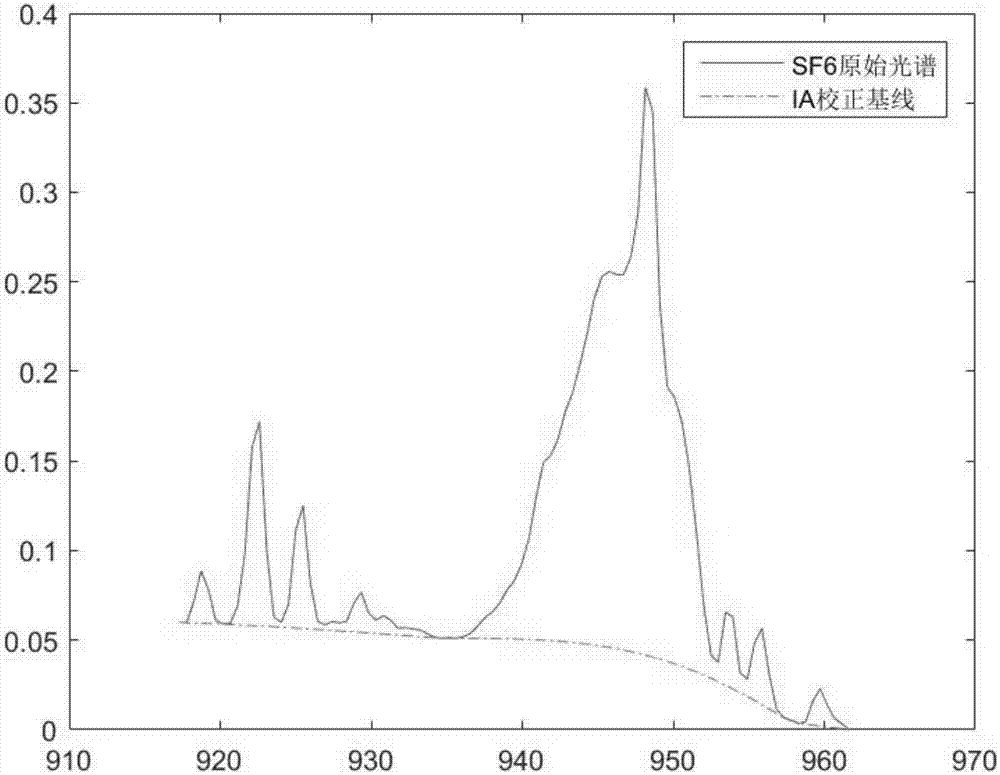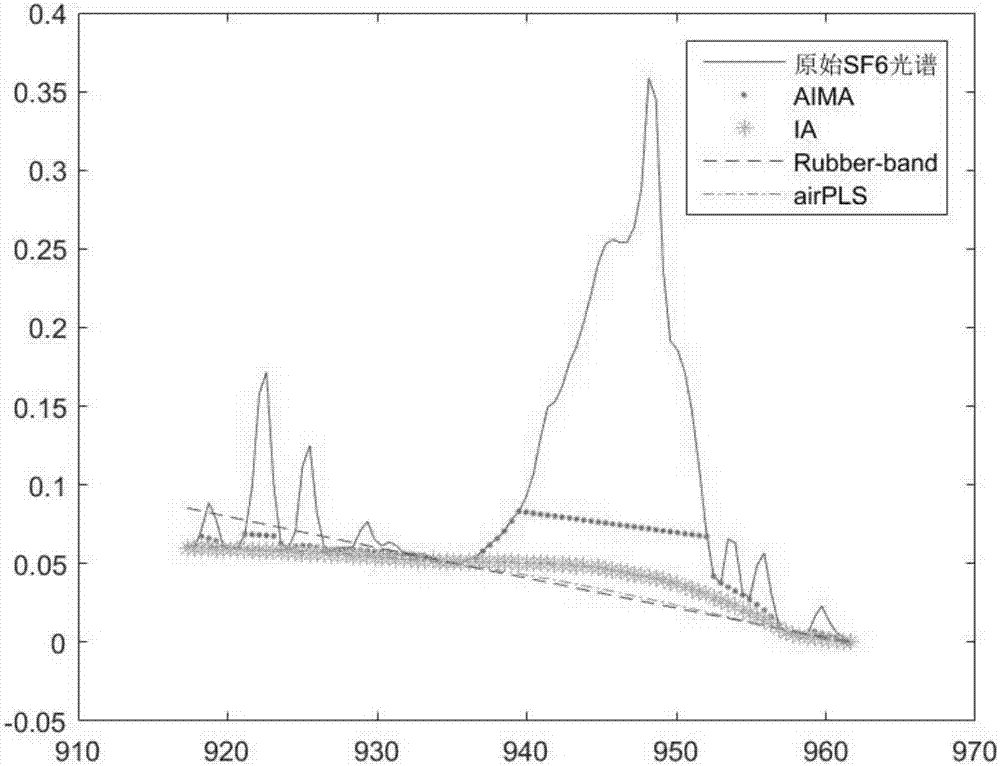Automatic baseline correction method for infrared spectroscopy
An infrared spectrum and baseline correction technology, applied in the field of infrared spectrum analysis, can solve the problems of reducing the universality and adaptability of the baseline correction method, poor performance, and difficulty in meeting the needs of infrared spectroscopy
- Summary
- Abstract
- Description
- Claims
- Application Information
AI Technical Summary
Problems solved by technology
Method used
Image
Examples
specific Embodiment 1
[0023] (1) Gather an absorption spectrogram containing 115ppm standard SF6 gas component with the self-developed open Fourier transform infrared spectrometer, and obtain a certain band range of SF6 absorbance spectrum through preprocessing, where the spectral band is 917cm -1 ~962cm -1 band;
[0024] (2) Concretely adopt an open Fourier transform infrared spectrometer, determine the iteration threshold λ for SF6 gas components to be 0.007, then use the method of the present invention to process the SF6 absorbance spectrum of this band, obtain the processed SF6 absorbance The baseline of the spectrum, such as figure 2 shown;
[0025] (3) Then use other baseline correction methods to process the SF6 absorbance spectrum to obtain the corrected spectrum baseline for comparison. The present invention performs iterative calculation by setting the iterative threshold λ, and constantly pulls the absorbance spectrum back to the baseline 0 , to complete the correction of the origina...
specific Embodiment 2
[0026] (1) Use the self-developed open Fourier transform infrared spectrometer to collect an absorption spectrum containing 115ppm standard SF6 gas components, and obtain the SF6 transmittance spectrum in a certain band range through preprocessing, where the spectral band is 917cm -1 ~962cm -1 band;
[0027] (2) Concretely adopt an open Fourier transform infrared spectrometer, determine the iteration threshold λ for SF6 gas components to be 0.007, then use method two of the present invention to process the SF6 transmittance spectrum of this band, obtain the processed The baseline of SF6 transmittance spectrum, such as Figure 5 shown;
[0028] (3) Then use other baseline correction methods to process the SF6 transmittance spectrum to obtain the corrected spectral baseline for comparison. The present invention performs iterative calculation by setting the iterative threshold λ, and constantly pulls the transmittance spectrum back To the baseline 1, the calibration of the ori...
PUM
 Login to View More
Login to View More Abstract
Description
Claims
Application Information
 Login to View More
Login to View More - R&D
- Intellectual Property
- Life Sciences
- Materials
- Tech Scout
- Unparalleled Data Quality
- Higher Quality Content
- 60% Fewer Hallucinations
Browse by: Latest US Patents, China's latest patents, Technical Efficacy Thesaurus, Application Domain, Technology Topic, Popular Technical Reports.
© 2025 PatSnap. All rights reserved.Legal|Privacy policy|Modern Slavery Act Transparency Statement|Sitemap|About US| Contact US: help@patsnap.com



